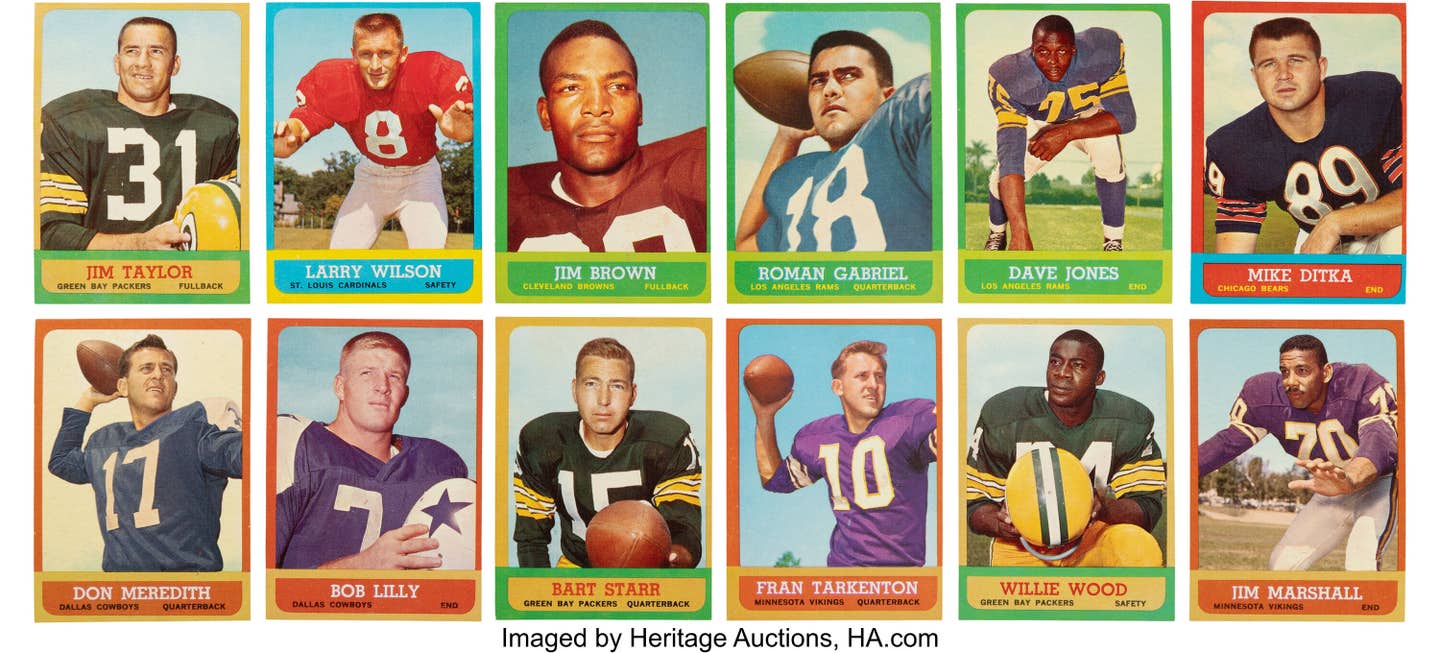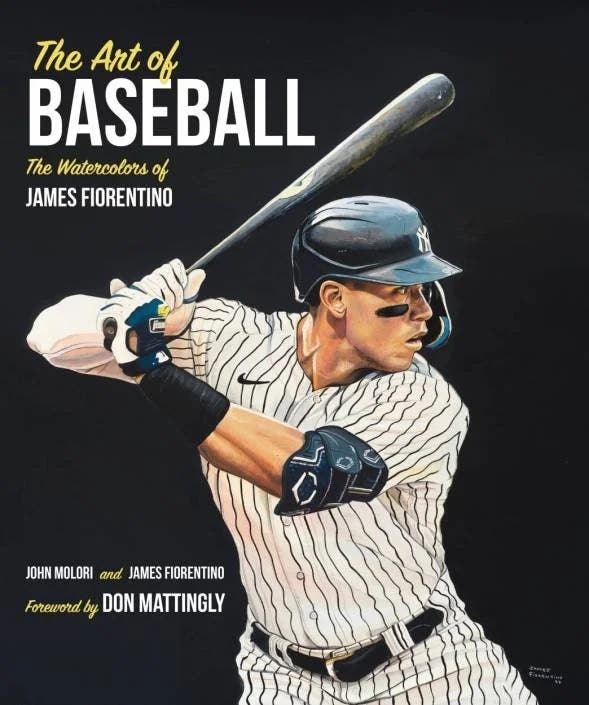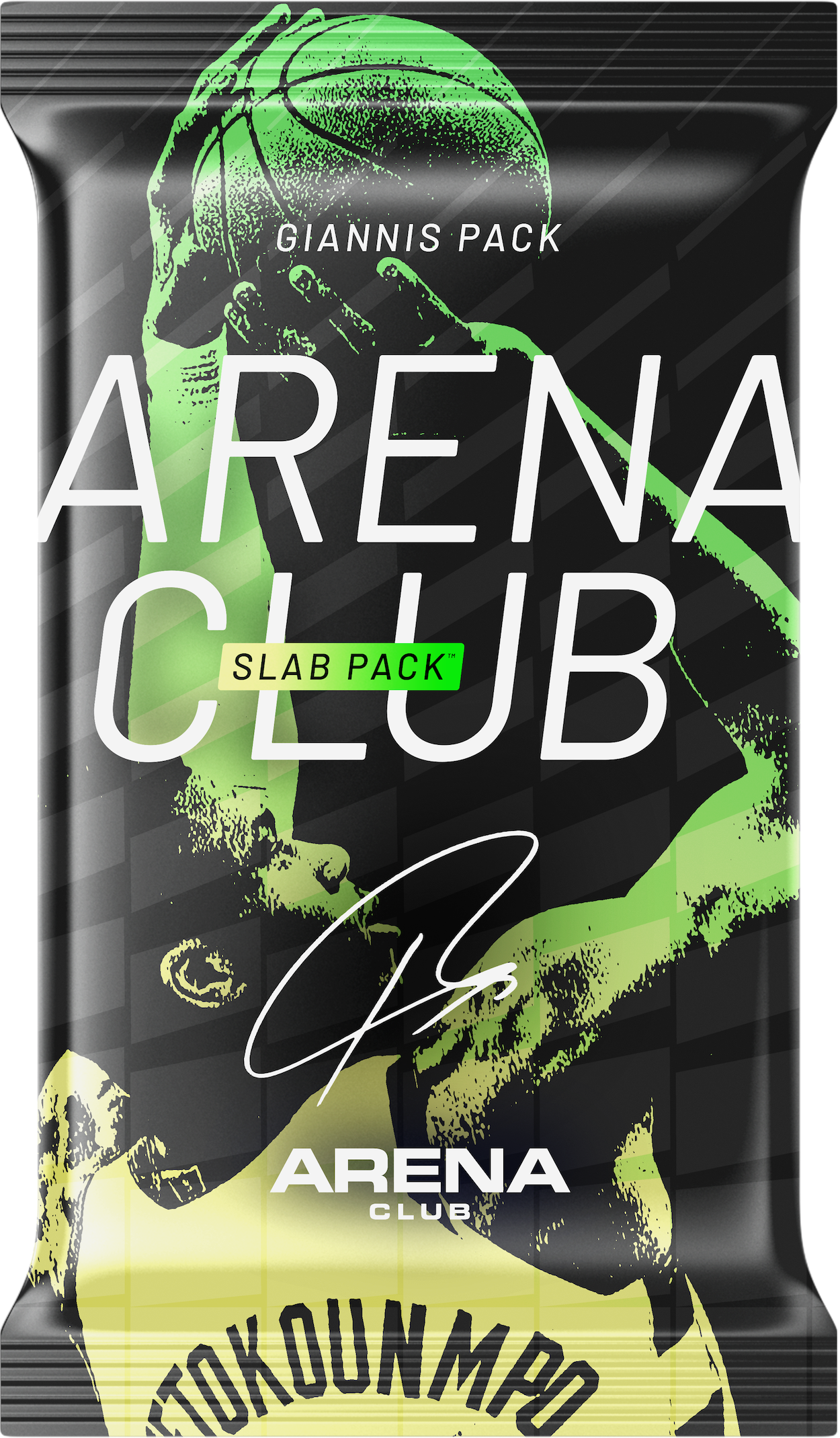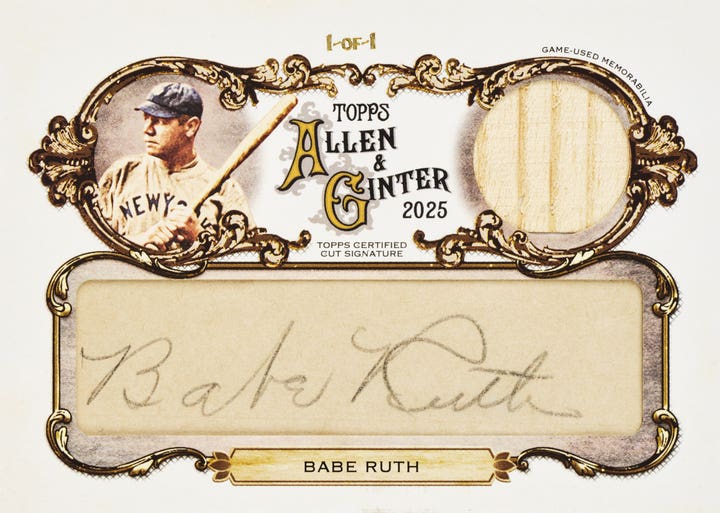
News
1963 Topps Football filled with rookie cards, Hall of Famers, and a strange, colorful background
What can anyone add about a set of sports cards that is more than 60 years old?
When it is Topps football cards issued in the fall of 1963, it turns out that there is quite a bit to say. In fact, there has been much said and written about the 1963 Topps Football set in the past few years, although almost of all it concerns just one feature. It is not the teams or players found on the cards or the popularity, attractiveness or value of the set.
It is, believe it or not, only the color of the sky.
In 1963, Topps Chewing Gum was issuing cards of the National Football League for the eighth consecutive year. Its smaller and weaker rival Fleer had to be content with its affiliation with the upstart American Football League, then in its fourth year of existence. (Although Topps' contract with the NFL was supposedly exclusive, Fleer was able to somehow include both AFL and NFL players in its 1961 set).
The 1963 set was to be the last Topps NFL set for five years. Somehow Philadelphia Gum outbid Topps for the rights to NFL cards in early 1964. Thus, for the next four years, NFL players could only be found on Philadelphia cards while Topps joined forces with the less popular AFL, and Fleer found itself out in the cold, at least as far as football cards were concerned.
In 1968, Topps regained the upper hand, secured all rights for both leagues (which had merged in 1966), and included both NFL and AFL (later NFC and AFC) players in its sets for that year and for all subsequent years until again losing its NFL license to Panini in 2016.
For its last football set until 1968 Topps pulled out all the stops. The 1963 cards are superior to those found in the 1961 or 1962 sets and most similar to the very attractive 1960 cards, although cropped smaller than the earlier issue. Pictures are mostly portraits and all posed. The photography is extremely clear and only a handful of players are helmeted.
There is just that problem with the sky.
The pictures are all evidently taken at a training camp. Seen in the background are such non-stadium fixtures as trees, shrubs, telephone poles, and clubhouses. The card of San Francisco 49er wide receiver Bernie Casey (card #137) even shows a handful of tourists standing on the sideline.
However, it is obviously not the 1963 preseason. A number of players are shown in their uniforms from earlier years. For example, Cleveland Brown defensive end Bill Glass (#20) is shown as a Detroit Lion, although he played for the Browns in 1962. No less than four Pittsburgh Steelers are, likewise, shown with their pre-1962 teams. And Topps really opened their historical files for Dallas Cowboy safety Jerry Norton (#83), the only player in NFL history to twice intercept four passes in a game, who is shown with the Philadelphia Eagles, for whom he last played in 1958.
Each picture is surrounded by a colored border, with all players from a team sharing the same color. The bottom margin of each card is the same color as the other three sides but the player's name, team and position are surrounded by a contrasting color. The overall result is striking but, as with other issues with colored borders, such as 1962 Topps baseball, the corners are prone to chipping and peeling, leading to a shortage of truly mint cards.
Behind each player is what should be an obvious, simple background, the clear summer sky. Collectors have always known that the majority of cards in the 1963 set can be found with a sky that is either light blue or dark purple. It has only been in this century that an effort has been made to identify which cards can be found in two versions and to establish if these “purple sky” cards can be considered a true variation or a mere printing inconsistency.
It is not a basic matter of cards having a slightly different tint due to varying application of ink during the printing process. If that were the case, the entire card would present a darker or lighter appearance. Comparison of both versions of the same card shows the player's appearance to be identical in every case but the sky to be markedly different. For those cards with trees or bushes in the background, this greenery is, like the sky, noticeably darker. Thus, it is evident that Topps itself created the different versions with some modification during the printing process.
If so, like the “white letter” and “yellow letter” versions of Topps' 1958 baseball cards, the “purple sky” versions should be considered a legitimate variation. However, all 1963 Topps football cards are at present considered to comprise one 170-card set and collected that way, regardless of sky color, although it is obvious that the darker sky cards are much less common than those of a normal blue color.
‘FAST AND DANGEROUS’
The backs of the 1963 cards contain the usual basic description (height, weight, college, etc.). Backs and ends have the expected two rows of statistics for last year and their career. For linemen this is replaced by four or five lines of the standard Topps hyperbole. For example, Billy Ray Smith (#9) “is fast and dangerous at all times.” Carl Brettschneider (#31) “is a menace to opposing passers.” Jack Stroud (#53) “knows how to throw a bone-crushing block.” And Dan Colchico (#144) “hits like a ton of bricks.”
A few card backs do contain some personal interest trivia. We are told that Rosey Grier (#56) “has cut several recordings as a guitar player & singer,” and that Leo Nomellini (#143) came to the U.S. from Italy as an infant while Ernie Stautner (#129) was born in Bavaria.
The remainder of the back is a cartoon quiz about that particular player. Typical are: “What NFL club did Don break in with?” Or, “What award did Jerry win in 1956?” Or, “What position did Sam play at Oregon State?” The answer appears when a small piece of red cellophane (included in each wax pack) is placed over the cartoon.
Each team is represented by 12 cards in the set. Cards appear, as they did in the previous three years, by city in alphabetical order and then by position. Quarterbacks appear first, then running backs, followed by linemen starting with ends and working inward. Thus, quarterback Johnny Unitas of the Baltimore Colts is the first card in the 1963 set for the fourth consecutive year.
Then come defensive players who, unlike in the sets of 1960-1962, may or may not follow any logical sequence. A few teams, such as the Colts and Bears, present defenders in order of linemen, linebacker and finally backs. For most teams, however, defensive players seem to appear randomly. The final card in each team's series is a team card. The quiz on these team cards relates to some team record, such as “What's the longest punt return by a Viking player?”
There are two interesting characteristics of the team cards. For one thing, every team card appears with a solid color background so there is no issue of purple versus blue skies. Second, the team cards do not present the 1963 or even the 1962 teams. Instead, Topps recycled team pictures from two years ago for some teams (especially expansion teams like the Cowboys and Vikings) and from as long ago as 1958 for many others. For the Chicago Bears, for example, every team card from 1959 to 1963 is identical except for some minor border design and every one of the five shows the Bear team of 1958.
Thus, while there are no individual coaches cards in the 1963 set, legendary Packer coach and two-time reigning NFL champion Vince Lombardi does appear but not as a Packer. He is not identified by name but can be found second from the left in the third row of the team card of the New York Giants (#60). This is actually the fourth annual re-issuance of the 1959 Topps card showing the 1958 Giants team, for whom he served as assistant coach. On the opposite end of that same row on that same card is another Giant assistant, future Cowboys icon Tom Landry.
For some reason, the teams are not presented in straight alphabetical order from Baltimore to Washington, as they were from 1960 to 1962. Instead, five teams appear in order from Baltimore to New York, then the remaining nine appear, again in order, from Chicago to Washington.
HALL OF FAMERS
The 1963 Topps set is loaded with no less than 34 future Hall of Famers, including rookie cards of Deacon Jones, Bob Lilly, Willie Wood, Ray Nitschke, and Larry Wilson. Also found in the set is longtime Monday Night Football announcer Don Meredith (#74).
An underappreciated card must be that of Cowboy guard Andy Cvercko (#78), who may never have made All-Pro but he was certainly undefeated in Curly Howard Look-a-Like contests.
There are some notable omissions from the set. All-Pros and future Hall of Famers Paul Hornung and Alex Karras can only be found on their team cards after being suspended for a year by Commissioner Pete Rozelle on April 17, 1963 after admitting to gambling on NFL games. “The Elmira Express” Ernie Davis won the 1961 Heisman Trophy and appeared in the 1962 Topps set as a Brown. However, he never got to play in an NFL regular-season game and Topps did not include him in its 1963 set after he passed away from cancer on May 18, 1963.
Steeler defensive tackle Gene Lipscomb was a perennial All-Pro and is often cited as the prototype of the modern defensive lineman for his combination of size and speed. As “Big Daddy” Lipscomb he was also an offseason professional wrestler of some renown. He, too, was omitted from the set after dying of a drug overdose on May 10, 1963. Like Hornung and Karras, he does appear on a team card, in his case that of the Baltimore Colts (#12), for whom he played in 1958. He is in the middle of the back row, wearing number 76 and towering over his teammates.
Strangely, deceased Brown safety Don Fleming does appear in the set despite having been electrocuted in a construction accident on June 4, 1963. Ironically, the quiz on the back of his card (#22) concerns his offseason activity and tells us he worked in the construction field.
SET DETAILS
The 1963 set contains 170 cards in all, with 12 cards for each of the 14 NFL teams and two additional checklist cards (#85 and #170). The cards were printed on two sheets, each containing the standard Topps 132 cards. This meant that 94 individual cards were printed on both sheets while the remaining 76 cards appear only once, 38 on each sheet. Thus, the 170-card set includes 76 cards that were printed in half the number of the other 94.
The 76 short prints have always been known. They are all members of the Cleveland Browns, New York Giants, Dallas Cowboys, Philadelphia Eagles, Pittsburgh Steelers, and Washington Redskins, and a few other team cards. Which means the set's only card that is a Hall of Famer, a rookie, and a short-print is that of Cowboy defensive tackle Bob Lilly (#82).
The set does contain two error cards, both uncorrected. HOF Eagle quarterback Sonny Jurgensen's name is misspelled “Jurgenson” on his card (#110), while Redskin defensive back Claude Crabb is misidentified on his card (#168) as “Claud.” Both errors are repeated on Checklist #2, the set's final card. In addition, Vikings defensive tackle Jim Prestel's name is correct on his card (#108) but misspelled as “Prestal” on that checklist.
So the 1963 Topps football set has something for everyone—stars, rookies, short-prints, errors, and possible variations (depending on how you view the purple sky cards). The set is readily available and affordable, even the stars, especially considering the cards date from the Kennedy Administration.
As expected, the short-prints are more costly but not excessively so. Mint and Gem Mint cards will bring a significant premium due to their scarcity. Grade 9 and 10 cards of stars and superstars can cost well into four figures. But I was able to put together a complete set in VG-EX condition (including several purple sky variations) in less than a year and at a reasonable cost mostly through Kevin Savage Cards and other SCD auctions.
So, in addition to all its other positive features, the 1963 football set is interesting and attractive to both investors and collectors.








